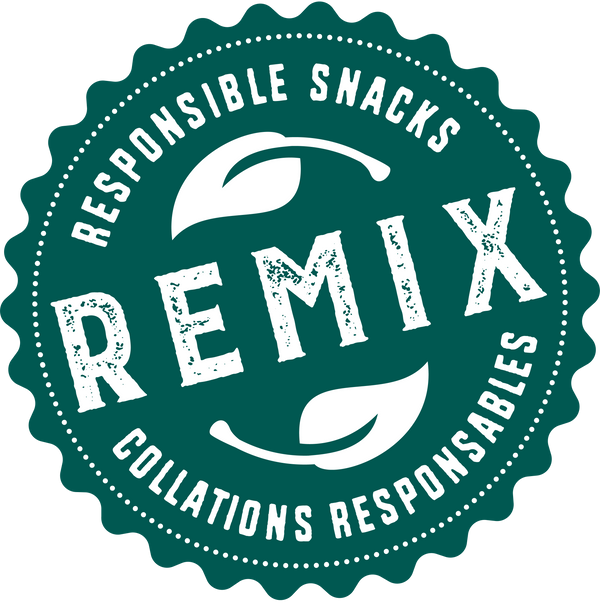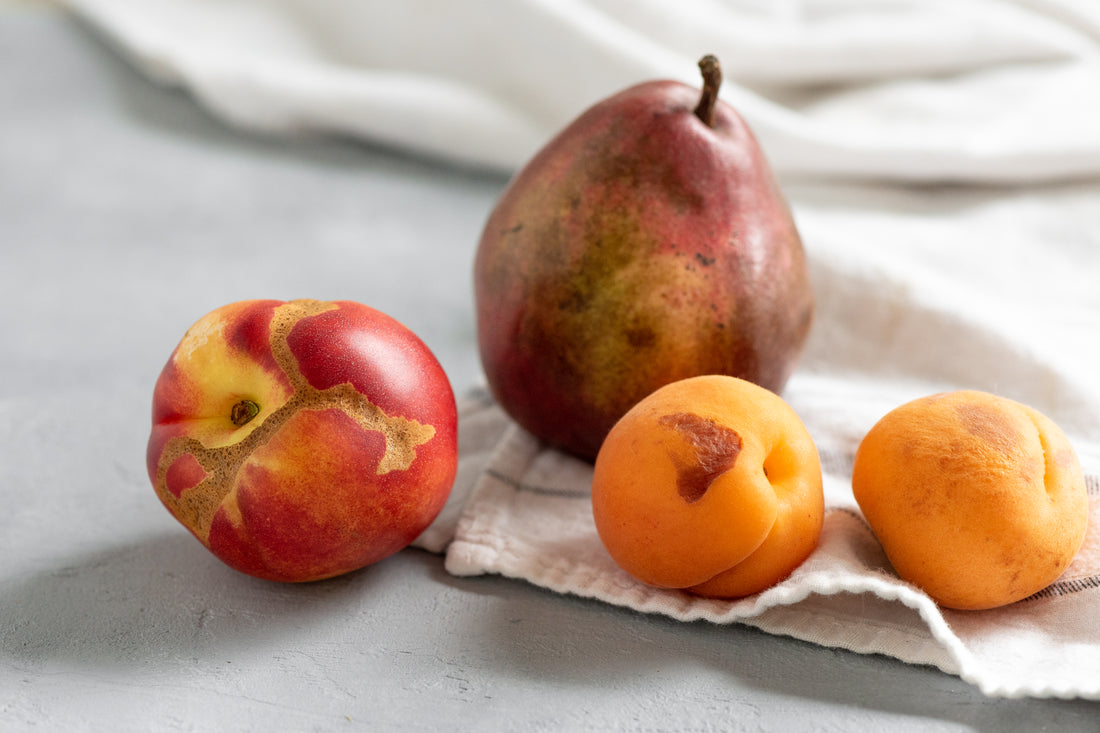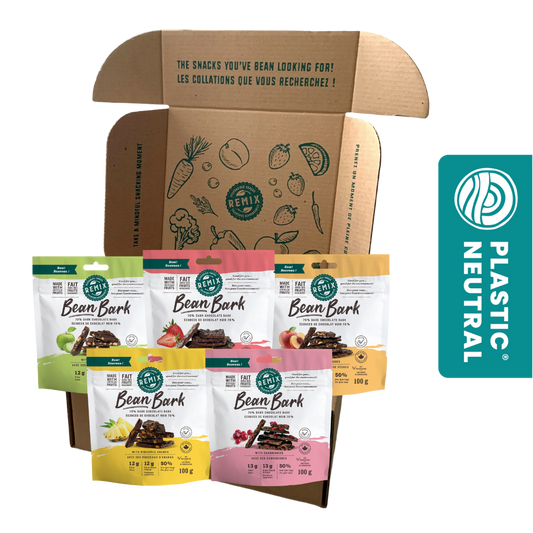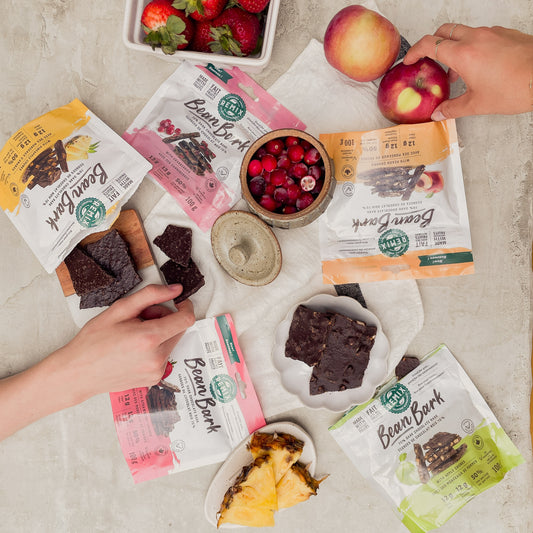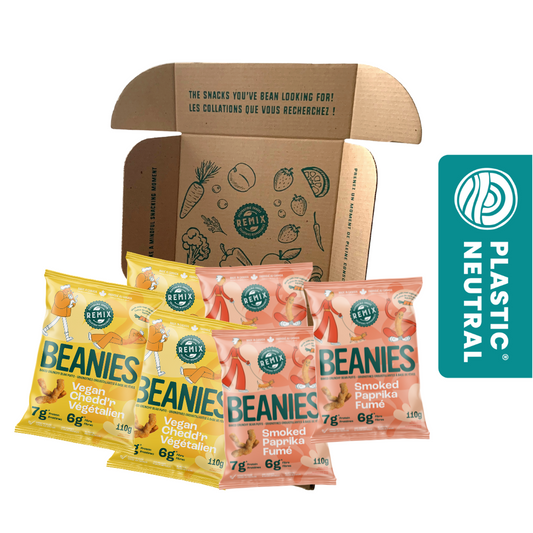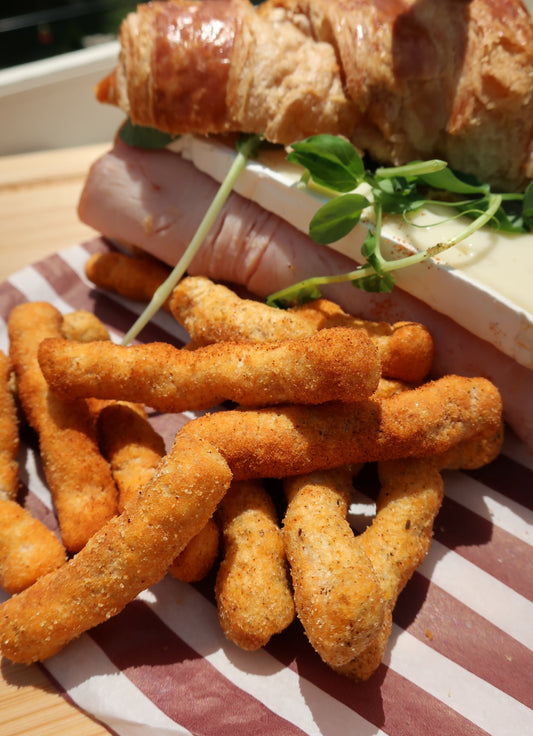
Written by: Eliza Yadav, May 2020
What are Upcycled Fruits?
- Upcycled produce consists of fruit and veggies that do not meet the aesthetic standards of stores because of imperfections. Imperfections may include discoloration, bruising, spotting, etc. They are upcycled by food and beverage companies through reselection for food manufacturing and production.
- Contrary to popular belief, upcycled fruit are good to eat, have the same nutritional content as “perfect” fruit, and are often healthier for the human immune system.
- 45% of produce in the world is wasted annually due to these aesthetic standards. In addition to commercial rejection, consumers perform their own selection in-store, often opting for produce that looks perfect. The remaining produce is traditionally thrown away (1).
Upcycled Fruits and their Environmental Impact
- Produce wastage both indirectly and directly contributes to 8% of global climate pollution. To satisfy demand for perfect fruit, specific fertilizers and intensification processes are used. Some fertilizers can end up in streams and contaminate large bodies of water, thereby killing sea life and contributing to a loss of biodiversity. Contamination of large bodies of water can further deplete the waters’ aesthetic value and impair it for drinking purposes (3).
- Food wastage contaminates the air we breathe by releasing Nitrogen during decomposition. Nitrogen, combined with Oxygen (N. 20) results in a powerful greenhouse gas which directly contributes to climate change (5).
- Meanwhile, millions around the world do not have enough to eat (4). Individuals living in South Asia and Sub-Saharan Africa, for example, face food insecurity because of poor food governance and climate disasters.
What You Can Do
- Know that upcycled fruits are good for you. “Perfect” fruits can often be coated in thick layers of wax, grown with pesticides, and are often genetically modified. Imperfect produce is often grown naturally and has antioxidants which can improve the immune system (2).
How Bean Bark Comes into the Picture
- Our Bean Bark dark chocolate snacks are created with locally grown upcycled fruits. To date, we have saved around 925 pounds of fruits such as cranberries, apples, and peaches.
- By snacking on our delicious chocolates you are helping save tons of imperfect fruits! Try them out for yourself by clicking on order now!
- Don’t forget to follow us on Instagram and Facebook! And stay tuned for more informative blog posts.
@remixsnacks
References:
-
Environmental Pollution Center (2017). “Ugly food is good for you and the environment!” https://www.environmentalpollutioncenters.org/news/ugly-food-is-good-for-you/
-
Neimark, Jill. (2016). “Beneath an ugly outside, marred fruit may pack more nutrition” NPR.https://www.npr.org/sections/thesalt/2016/04/26/475739569/beneath-an-ugly-outside-marred-fruit-may-pack-more-nutrition/
-
Eriksson, M. (2012). Retail food wastage (Vol. 45). https://pub.epsilon.slu.se/9264/
-
Grizzetti, B., Pretato, U., Lassaletta, L., Billen, G., & Garnier, J. (2013). The contribution of food waste to global and European nitrogen pollution. Environmental Science & Policy, 33, 186-195. https://reader.elsevier.com/reader/sd/pii/S1462901113001251?token=4B29E6E4944248355C27A52E690B3793ED94AE397AB46828D3BF686EE3F28A61D5A5B368362F8A18B25F3713FD58D29D
-
David Suzuki Foundation. (2020). “What are greenhouse gasses?” https://davidsuzuki.org/what-you-can-do/greenhouse-gases/
